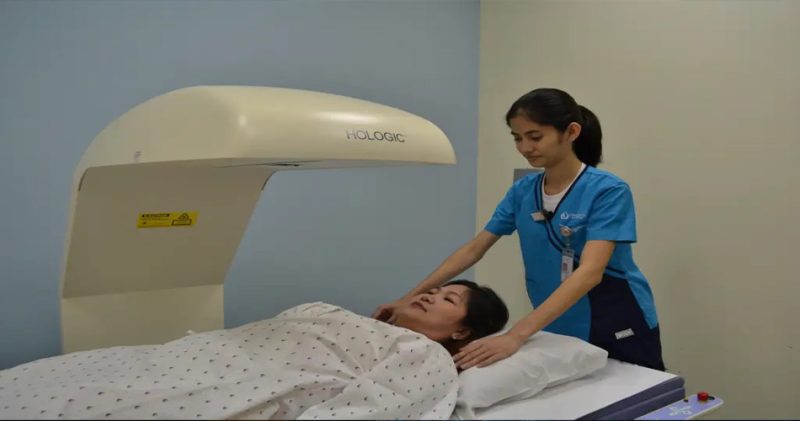Bone Mineral Densitometry

Bone Mineral Densitomety
DEXA Bone Mineral Densitometry is the gold standard for measuring bone mass and detecting Osteoporosis.
Osteoporosis is a bone disorder that can be described as a generalized weakening of the skeleton due to loss of bone and calcium. A skeleton that has been weakened by bone loss is more likely to fracture, and people with osteoporosis have a high incidence of fractures. If all those people with osteoporosis could be identified and treated, a large number of fractures could be prevented.
In India, 1 in 6 women over 50 years old will break their femur (hip), while 1 in 4 will suffer severe fractures in one or more bones.
The death rate from osteoporosis-related fractures is greater than deaths caused by breast and ovarian cancer combined!
SDCPL has Asia’s No.1 Bone Mineral Densitometry machine installed, allowing detection at three sites: the hip, the spine, and the forearm, as recommended by the World Health Organization (WHO).
In contrast, conventional portable machines can only scan single sites.
An annual DEXA scan is recommended after the age of 40 years (especially for women). For those at high risk for osteoporosis as identified below, scans at an earlier age may be required.
Experts believe you may be at risk for osteoporosis if you have one or more of the following
- Family history of osteoporosis.
- Early menopause either natural or surgical.
- Amenorrhea (lack of periods) particularly in young woman.
- Anti-seizure medicine for many years.
- Hyperthyroidism or hyperparathyroidism.
- Cushing’s syndrome.
- Kidney failure colitis.
- Stomach or intestinal surgery.
- High intake of alcohol, coffee, tea or soft drinks.
- Heavy smoking.
- Low dietary intake of calcium.
- European or Asian ancestry.